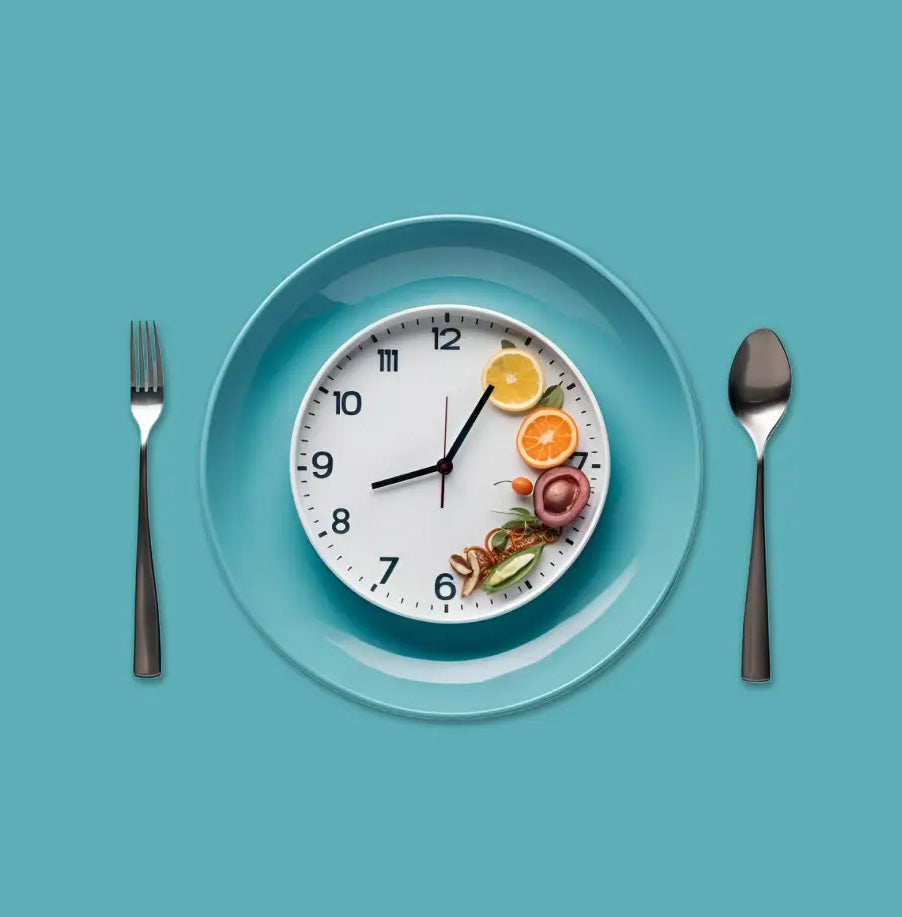
Why Skipping Meals Could Be the Smartest Thing You Do This Week

Welcome to fasting: one of the most time-tested and research-backed ways to restore health, balance hormones, health from injury and even slow aging. While it might sound extreme, a fast simply means allowing your body longer breaks between meals so it can do what it was designed to do—heal. When you stop eating for a period of time, your body doesn’t panic. It recalibrates.
Here’s what happens during a fast, step by step:
- 12–16 hours: Your body switches from burning sugar (glucose) to burning fat for fuel—a metabolic shift known as ketosis. This is when weight loss and increased energy typically kick in.
- 16–24 hours: Autophagy begins—a cellular clean-up process where the body clears out old, damaged cells, helping to protect against disease and support longevity.
- 24–36 hours: Growth hormone surges, supporting muscle preservation and fat loss. Insulin levels drop dramatically, helping to improve blood sugar regulation.
-
36–48 hours: Inflammation reduces, and deeper tissue repair begins. Stem cell activity increases, particularly in the gut, supporting regeneration from the inside out.
- Beyond 48 hours: More advanced benefits unfold—such as improved immune function and brain cell repair—but longer fasts should only be done with proper guidance.
You don’t have to go days without food to benefit, though. That’s where intermittent fasting comes in.
The Power of Intermittent Fasting
Intermittent fasting (IF) involves cycling between periods of eating and fasting each day. The most popular approach is the 16:8 method—fast for 16 hours, eat within an 8-hour window (say, 12pm to 8pm). Others prefer 14:10 or even a 24-hour fast once or twice a week.
But here’s the catch: during your fasting window, even small snacks, cream in your coffee, or fruit juice can interrupt the process. The key is a clean fast—water, black coffee, or herbal tea only. That’s what allows your insulin to stay low and the deeper healing to begin. And if you still feel uneasy at the thought of not eating – the wildly popular ProLon diet uses advanced scientific formulations to give your body the benefits of a fast—while still allowing you to eat!
And ladies—don’t forget: your body is unique. As Dr. Mindy Pelz explains in Fast Like a Girl, women benefit from syncing their fasting routines with their hormone cycles. The week before your period, for instance, your body needs more nourishment—not more stress. Learning to fast with your biology (not against it) is a game-changer.

Fasting as a Path to Spiritual Connection and Inner Stillness
Fasting has long been used as a spiritual practice across cultures, helping seekers heighten awareness and connect more deeply with Source. It softens the veil between the physical and the energetic, supporting a deeper sense of alignment and inner stillness. Many people find that a fast can deepen their meditation practice, enhance intuition, and bring a greater sense of clarity and presence. When the noise of digestion quiets, it becomes easier to hear the voice within.
Curious to try it? Start small. Even delaying breakfast by a few hours can make a difference. And if you're ready to go deeper, check out the Coach Directory inside Harmoneum to find expert guidance for a fast that’s right for you. Our Harmoneum Coach Trish Mangold specializes in
Your body already knows how to heal. Sometimes, the most powerful thing you can do—is give it a little space.
In harmony,
~Delphine

 https://www.harmoneum.com
https://www.harmoneum.com